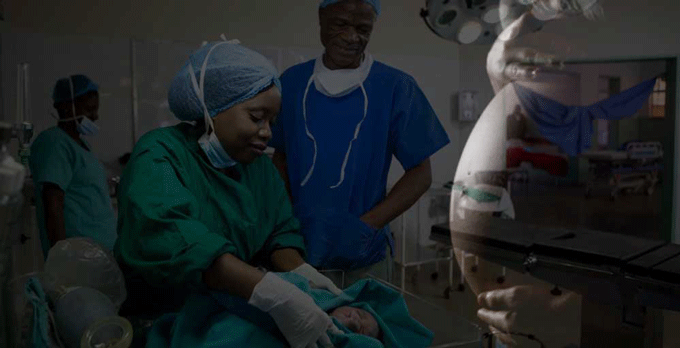
BY NOKUTHABA DLAMINI
Lilian Mdlongwa, 19, a first-time mother from Manomano village, recalls how she almost lost her baby when she went into labour at Nkayi district hospital a month ago, when there was complete shutdown of electricity at the whole hospital as part of load shedding.
“The nurses had only a small rechargeable light that they used to deliver my son and that of another expecting mother that I went into labour with,” Mdlongwa narrates.
“It was tough, and when I had just delivered, the nurse who stitched me noticed that she had almost left some cotton wool inside me.”
“It was dark because the small light had been put at the centre for them to share, and even that lady had a similar tale as they almost stitched her cuts while the cotton wool was inside,” Mdlongwa says.
When The Citizen Bulletin visited the hospital recently, the whole hospital was in complete electricity blackout and none of the administration, theatre and X-ray duties among other day-to-day programmes of the hospitals were being conducted.
Patients that had come for X-ray examinations, for instance, were being told to go back to their homes, or wait until electricity was restored.
But, even for those that waited for up to eight hours, their examination could not be completed as electricity was restored and immediately cut off ten minutes later with the darkness extending throughout the night.
- Chamisa under fire over US$120K donation
- Mavhunga puts DeMbare into Chibuku quarterfinals
- Pension funds bet on Cabora Bassa oilfields
- Councils defy govt fire tender directive
Keep Reading
In September the country’s electricity provider, Zimbabwe Electricity Transmission and Distribution Company (ZETCDC) implemented countrywide 12-hour load shedding due to power generation issues at Hwange coal powered station.
According to the District Medical Officer Thabani Moyo, the problem of electricity the hospital is experiencing started about two months ago, and has seen many expecting or just delivered mothers struggling to nurse their babies successfully, especially at night.
“The challenge, especially to patients and nursing staff, is largely felt at night,” Moyo notes.
“We have tried to purchase four small lights, but we can only give them one per ward, and that light is only used by the nurses on duty, so patients struggle a lot during this time,” says Moyo.
Mdlongwa says during the week she was in hospital following delivery, she relied on her neighbour’s phone torch to change her newly-born nappies, clean the umbilical cord or comfort her wailing baby.
“We breastfed in the dark,” she adds.
“The light that the nurses use services everyone and during that time, there were over ten of us in the ward and the same light was also being used to assist in the labour section, so its use was based on emergencies.”
Moyo says they have tried to rope in the ZETCDC officials from the district without any fruitful outcomes.
He says the feedback that they get is that the hospital is equipped with a solar system, but it also has some issues despite it being only two years old.
“We have a solar system that covers the maternity labour wards, post-natal ward, theatre, mortuary and the pharmacy but even so, we have a challenge with that solar system because it doesn’t pull and the batteries are always too low such that we fail to even use them.” Moyo said.
Provincial medical director Admire Kuretu says the Nkayi solar system has not been connected to the whole hospital and is only meant to cover critical areas like maternity and theatre and the health ministry’s head office is aware of the Nkayi situation..
“The solar system works, the problem is that the installation is not complete and it covers a small part of the hospital,” Kuretu says.
He adds that they have been pushing the head office to connect the other departments like the wards, the mortuary health information, the administration block and the X-ray department.
- * This article was originally published by The Citizen Bulletin, a nonprofit news organisation that produces hard-hitting, hyperlocal reporting and analysis for the southwestern region of Matabeleland.










